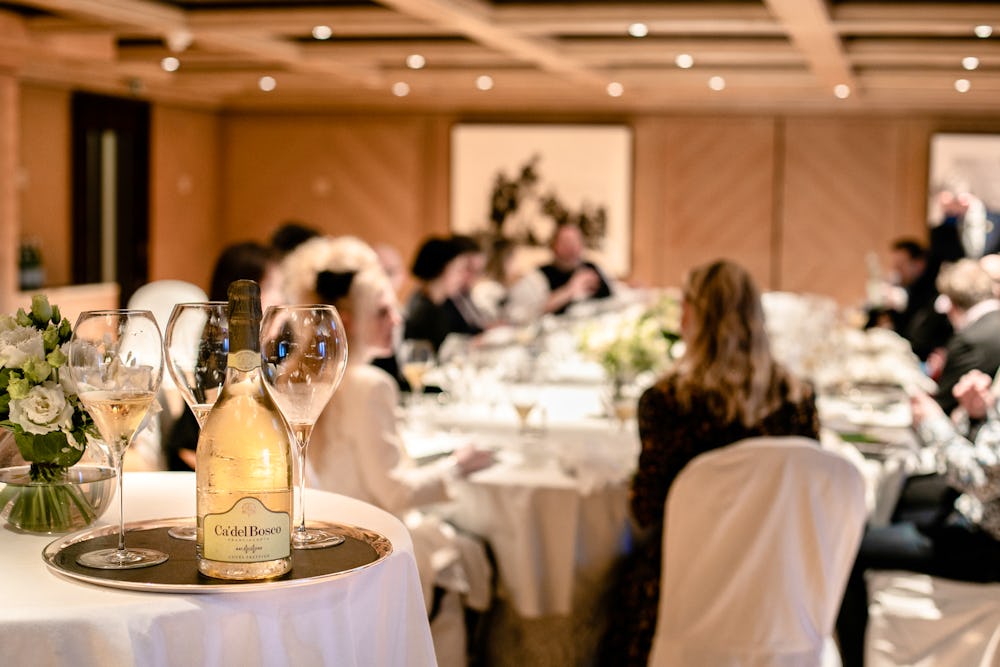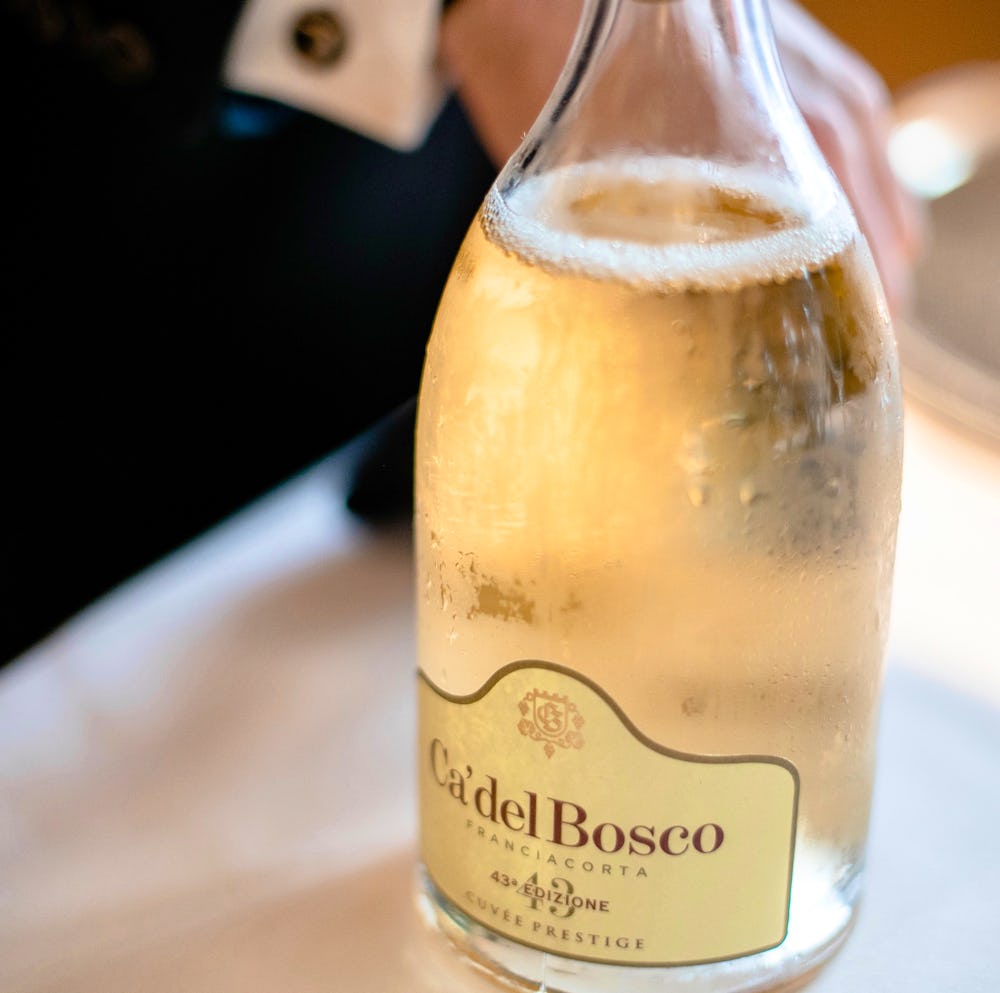While Italy is best known for Prosecco, Franciacorta is a sparkling wine region in Lombardy, just a short drive south of Milan, that matches Champagne for class and food-friendliness. Its wines are elegant, fresh and wonderfully versatile with food. But, unlike Prosecco which is produced under pressure in tanks, Franciacorta is made using the traditional methods inside bottles, in similar fashion to Champagne. And, for people that understand its viticulture, wine making and terroir – in a protected valley that borders beautiful Lake Iseo – the excitement the wines are now generating comes as no surprise.
Luxury, food wine
Franciacorta’s wines can range from bone dry with no dosage, all the way through a variety of five recognised styles, to sweet wine at the opposite end of the spectrum. The wine must spend a minimum of 18 months ageing on its lees and cannot be released until 25 months after the harvest, though these times are longer for vintage and prestige cuvée wines. Being further south than Champagne, Franciacorta’s grapes (Chardonnay, Pinot Noir, Pinot Blanc and Erbamat) tend to be riper than in Champagne on account of its more southerly position which means less sugar is generally added to balance the wines’ natural acidity.
In the UK, however, it is still little known compared to Champagne which is a great shame, as we discovered at the three-Michelin-starred Helene Darroze at The Connaught where Maurizio Zanella, the owner-founder of leading Franciacorta house Ca'del Bosco, was generously playing host.

Ca’del Bosco
Maurizio, so we were told, always loved Champagne and, following a trip to the region, which included Krug, was inspired to make something similar back home.
With only 50 year’s history, Ca’del Bosco remains a relatively young house, but one with a very clear sense of direction. That direction is looking beyond Italy’s borders and beyond the portals of Italian restaurants. While Giorgio Locatelli is a big fan, Franciacorta can now be found in other styles of restaurants, particularly in Japan, Germany and the US.
What we are focusing on is the multi-vintage Ca’ del Bosco Cuvée Prestige (note the French inference). Each edition of this wine is given a number and made up of the vintage harvested three years before with reserve wines from the previous two vintages to that. We were treated to Editions 42, 43 and 44 as well as Edition 30 whose base wine is the 2005 vintage which has been resting in bottle on its spent lees ever since and critically had only recently been disgorged in 2020 – a technique similarly employed by the top Champagne houses like Dom Pérignon and Bollinger. This wine was refined but fresh as a baby, its restrained nutty richness balanced with palate-awakening acidity and delicious minerality. And, importantly to its owner, the wine had absolutely no oxidation. Its delicate but persistent mousse which caressed the restaurant’s signature crab, made with brown and spider crabs and pomelo, was a complete delight, giving the seafood a light, zesty lift. And it would have been just as good with calamari, cheese, or for that matter, veal.

Pointing to the wine’s purity, Maurizio was keen to hail his secret weapon: a washing and jet spray system that incorporates three soaking vats and a drying tunnel for all of the rigorously selected grapes, which he fetchingly describes as his “berry spa”. And, to mitigate against rising temperatures, Maurizio has recently bought higher land at 600 feet above sea level with a view to cultivating vines here in years to come.
The Edizione 43 is largely made up of Chardonnay, with a small amount of Pinot Noir and tiny squeeze of Pinot Bianco. It is full bodied, round, precise and elegant, with soft peachy fruit and delicious biscuity notes that express themselves as the wine warms in the glass. It would make a wonderful Christmas present!
Ca’del Bosco Cuvee Prestige Edizione 43 Brut is available at:
Selfridges
Helene Darroze at the Connaught
Giorgio Locatelli